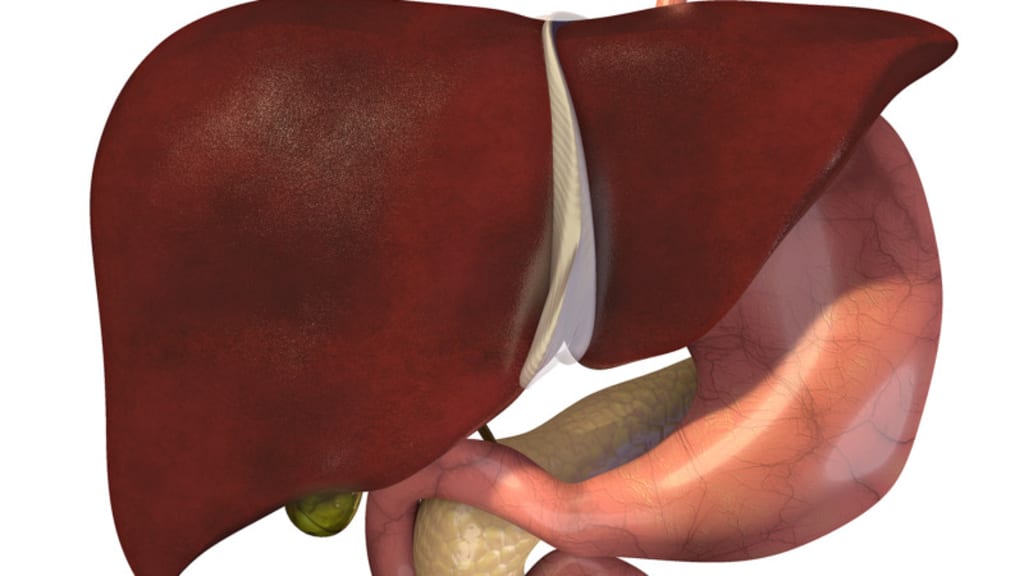Content warning
This story may contain sensitive material or discuss topics that some readers may find distressing. Reader discretion is advised. The views and opinions expressed in this story are those of the author and do not necessarily reflect the official policy or position of Vocal.
BILIARY ATRESIA
CAUSES, SYMPTOMS AND TREATMENT OPTIONS

Biliary atresia is a rare and severe liver disorder that primarily affects infants. In this condition, the bile ducts inside and outside the liver become inflamed and scarred, leading to blockage or absence of these ducts. Bile, essential for digesting fats and eliminating waste, cannot flow from the liver to the gallbladder and small intestine. Consequently, bile builds up in the liver, causing damage, scarring (cirrhosis), and potential liver failure. Biliary atresia requires prompt surgical intervention, typically a Kasai procedure, and often a liver transplant in the long term to manage the condition. Early diagnosis and treatment are crucial for the best outcomes. This article overviews the causes, symptoms, and treatment options for biliary atresia.`
Biliary AtresiaBiliary Atresia
Causes of Biliary Atresia
The exact causes of biliary atresia remain unclear, and it’s believed to be a complicated condition. Some common causes include:
Genetic Factors- There may be a genetic predisposition to biliary atresia, as it can occasionally run in families. Specific genetic mutations or variations may increase susceptibility.
Immune System Abnormalities- Some researchers speculate that an abnormal immune response in the liver or bile ducts could contribute to the inflammation and scarring seen in biliary atresia.
Viral Infections- It is suggested that exposure to certain viruses during pregnancy or shortly after birth may trigger the immune response, leading to biliary atresia in susceptible individuals.
Environmental Factors- Some environmental factors or toxins have been explored as potential triggers, but there is limited evidence to support this theory.
Symptoms of Biliary Atresia
With the right knowledge of the signs and symptoms of biliary atresia, anyone can identify their condition. Here is a list of symptoms to monitor:
Jaundice
Abnormal dark or pale-coloured pee
Hepatomegaly (abnormal growth of the liver)
Sudden weight loss
Swallow or distended stomach
Dark-coloured urine
Many times, infants with biliary atresia may experience difficulty feeding and restricted growth.
Diagnosis of Biliary Atresia
Early diagnosis is crucial for the detection of biliary atresia.
Physical Examination. Initially, doctors will perform a physical examination test to identify symptoms such as jaundice, an abdominal mass, or an enlarged liver.
Medical Tests. Diagnosing biliary atresia involves a series of medical tests. These include
Blood Tests: Blood tests may assess liver function and measure bilirubin levels, often elevated in biliary atresia.
Imaging Studies:
Ultrasound: A liver ultrasound can help visualise the liver and bile ducts, looking for signs of blockage or abnormality.
Hepatobiliary Scintigraphy (HIDA scan): This nuclear medicine imaging test can assess bile flow from the liver to the intestine.
HIDA scanHIDA scan
Liver Biopsy. A liver biopsy may be performed to examine a small sample of liver tissue for signs of inflammation, fibrosis, or cirrhosis.
Treatment Options For Biliary Atresia
Without proper treatment, biliary atresia can result in liver failure, necessitating early intervention and ongoing care. Here are the key treatment options:
Kasai Procedure (Hepatoportoenterostomy): The Kasai procedure is the primary surgical intervention for biliary atresia. It involves the removal of damaged bile ducts and the creation of a new pathway from the liver to the intestines.
Liver Transplantation: In cases where the Kasai procedure is not successful or if the disease progresses to an advanced stage, a liver transplant may be considered.
Nutritional suppor: Infants with biliary atresia often struggle to absorb nutrients. Specialised formulas and supplements may be recommended to ensure proper growth and development.
Medications: Some medications, such as ursodeoxycholic acid (UDCA), may be prescribed to help improve bile flow and protect liver cells.
Regular follow-Up: Regular follow-up appointments with paediatric gastroenterologists and hepatologists are essential for monitoring liver function, growth, and overall health.
It’s important to note that early diagnosis and immediate intervention are crucial for the best outcomes in biliary atresia. Ultimately, the appropriate treatment plan for biliary atresia will depend on factors such as the age at diagnosis, the extent of liver damage, and the response to initial interventions.
About the Creator
Abdullahi Alabi
I am Abdullahi by name. An expert writer with numerous years of experience. I have established myself as a prominent figure in the world of writing.
Enjoyed the story? Support the Creator.
Subscribe for free to receive all their stories in your feed. You could also pledge your support or give them a one-off tip, letting them know you appreciate their work.





Comments (1)
Hello, AI is permitted on Vocal. It is a Vocal policy that content created with AI is identified as such at the start of the story/article. Your article/story has many hallmarks of AI-assisted/generated content. You can find the details of the Vocal policy here: https://vocal.media/resources/an-update-from-vocal-on-ai-generated-content, Please amend your piece to be in compliance.